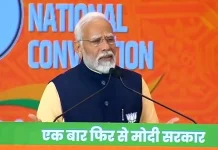US President Joe Biden recently remarked that countries such as India and Japan were facing financial troubles because they were ‘xenophobic’—they discouraged immigrants. After the statement sparked a controversy, the US administration engaged in damage control, with National Security spokesman John Kirby saying that President Biden valued the existing friendship with both Japan and India; the White House stated that the President’s comments were not derogatory but had been made in the context of the US’s generous immigration policy.
By Rajesh Singh
Biden could not have been more wrong. India’s economy is not faltering; on the contrary, it is growing so well that it is poised to soon be the world’s third largest. India is also not xenophobic. Consider the warm welcome and permanent residency it has given to thousands of refugees from Tibet and to the Dalai Lama, and to others from bordering countries who faced persecution over the years. In 1971, it gave shelter to tens of thousands of people who fled what was then East Pakistan. With the enactment of a new law, it has fast-tracked Indian citizenship to religious minorities who have faced persecution and come to India from Pakistan, Bangladesh and Afghanistan.
That said, the real problem is not with what Biden said, but with the mindset of the foreign audience at large—a mindset which in turn is shaped by what it reads and hears in the Western media. Every now and then, articles and commentaries appear in the Western press that are critical of India’s governance, and most of them are either ill-informed and based on selective material, or plainly deliberately malicious. While the Narendra Modi government has been a favourite whipping boy for the Western press, by no means has distorted reportage and skewed opinion articles been directed only at him. Various Indian governments and prominent Indian public figures have over the decades since Independence been the targets. Let’s consider a few examples.
In 1948, days before the Nizam of Hyderabad signed the Instrument of Accession, a British parliamentarian demanded that Britain take up the issue of ‘invasion of Hyderabad’ by India to the United Nations. Another parliamentarian claimed that a war-like situation had cropped up in Hyderabad which threatened to spread if Britain did not respond. The British media lapped it up. Not once did it question Britain’s interference in an independent country’s internal affairs. On the contrary, it presented India, and particularly Sardar Vallabhbhai Patel, as a villain. It was left to Patel to give a befitting response to a letter he received from a British citizen (who had questioned his actions). Patel pointed out that no country had the right to infringe upon the autonomy of another free nation, that too a member of the Commonwealth. He accused the British press of presenting a damaging image of India.
The abusive language that UP President Richard Nixon and his right-hand man, Henry Kissinger used for Indian Prime Minister Indira Gandhi, has been widely reported. When those remarks came out in the public domain, there was hardly a word of outrage in the Western press. Decades later, in 2005, only after Kissinger expressed regret for the derogatory terms hurled at the Indian leader, did the US media run the story—and even then, it focussed on the apology, rather than pass strictures on the language the US leaders had resorted to.
If the Western press revelled in demonising Indira Gandhi, it has gone on an overdrive in condemning Prime Minister Modi. The common factor here is that both these personalities enjoy the image of being strong and decisive leaders; and that, perhaps, troubles the foreign press. On the eve of Prime Minister Modi’s official visit to the US in 2023, the New York Times, in an article, lost no time in questioning the Biden administration for ignoring ‘democracy concerns’ and indulging in compromise to accommodate ‘important friends.’ The article claimed that the Modi government had ‘cracked down on dissent’ and ‘hounded opponents.’ The justification it gave for the opinion was flimsy.
A TIME article claimed that India under Modi had seen a worsening of democracy, and that the situation made New Delhi an unreliable ally of the US. The article claimed that Muslims across India were being discriminated against, and even prevented from offering prayers! They had trouble buying or renting property, or building mosques. The author of the article said that ‘Modi governed as if no one else matters.’ It is obvious from these rants that the writer had no understanding of India or its social realities. Its readers, many of whom would never have visited India and gained a first-hand understanding of the country, would naturally be influenced by what they read.
Many other Western publications have been busy in similar acts. The Economist once alleged that Modi was engineering ‘divisions in the world’s biggest democracy’ and ‘delivering collective punishment to the people of Kashmir.’ How? No convincing reasons were given. When Pakistan-patronised terrorists attacked a CRPF convoy in Pulwama in 2019, instead of condemning Pakistan unequivocally, the Economist asked both countries to ‘stop playing with fire.’
The Western media’s—or at least a big section of it—obsession with Modi found reflection in another hallowed institution: the BBC. In early 2023, the BBC aired a documentary that alleged Modi’s (he was then Gujarat Chief Minister) direct responsibility in creating an atmosphere which led to the 2002 communal riots in the state. It didn’t matter to the broadcaster that the highest court of the land in India had given Modi a clean chit. The BBC is a repeat offender when it comes to reportage on India. When Pakistani terrorists went on a killing spree in Mumbai in 2008, it called them ‘gunmen’, claiming that it had to be cautious in using the term ‘terrorist.’ Another terrorist, Burhan Wani, who was gunned down by Indian security forces more recently, was called a ‘charismatic Kashmiri militant leader.’
Examples of the Western media’s disregard for India’s security concerns and sensitivities and contempt for Indian leaders who show spine, are many more. Shockingly, it does not end there. The Western press has also been insulting to India’s achievements in various areas. Let’s take two instances.
The first is a cartoon that the New York Times published on India’s space missions. The cartoon showed a poor Indian farmer, accompanied by a cow, knocking the doors of ‘Elite Space Club’; it was published in the backdrop of India’s successful Mangalyaan mission. Not only was it demeaning to India but also brazenly racist. The BBC, while grudgingly acknowledging the achievement, said that in the opinion of many, India was nurturing delusional dreams—what was so delusional about it, was not clarified. On the launch of Chandrayaan, a BBC anchor wondered if India should be spending money on such pursuits when millions of Indians did not have access to toilets. By his logic, India must make no advances in any space or technological areas until every Indian household had a toilet in his home!
The second example is that of the reportage in the Western press about how India handled the Covid-19 calamity. The pandemic had devastated the world, with even developed countries having advanced healthcare systems, turning helpless before it. India, with relatively far limited resources and a healthcare system that was not as robust, managed the monumental crisis in ways that drew praise from non-partisan observers across the world. But the Western media had to criticise, and it did. The Guardian, a British newspaper, sought to turn the tragedy into a rich versus issue, saying that while the rich ‘quaff in wine in comfort, India’s poor are thrown to the wolves.’ While there is no denying the disparity in society, it was shameful of the paper to have exploited a tragedy that had claimed tens of thousands of lives (both poor and not poor) in rich-poor dimensions.
The newspaper published several more pieces in the same vein, but it was not alone. Others, such as the Washington Post, The Telegraph and The Wall Street Journal chipped in with their biases. Most of these articles had been penned by people carefully selected for their anti-Modi inclinations. Bizarre linkages were made with the pandemic: Pro-Hindu government, rampant child labour, ban on NGOs, and more. Any casual reader of the Western press in those times would have come to the conclusion that the government of India had done nothing to combat the pandemic, and that the situation eventually came under control all by itself!
Why does the Western press have this prejudice? It is difficult to understand. Perhaps it still suffers from the hangover of having lost colonial control over India.
This article first appeared in www.vifindia.org and it belongs to them.












